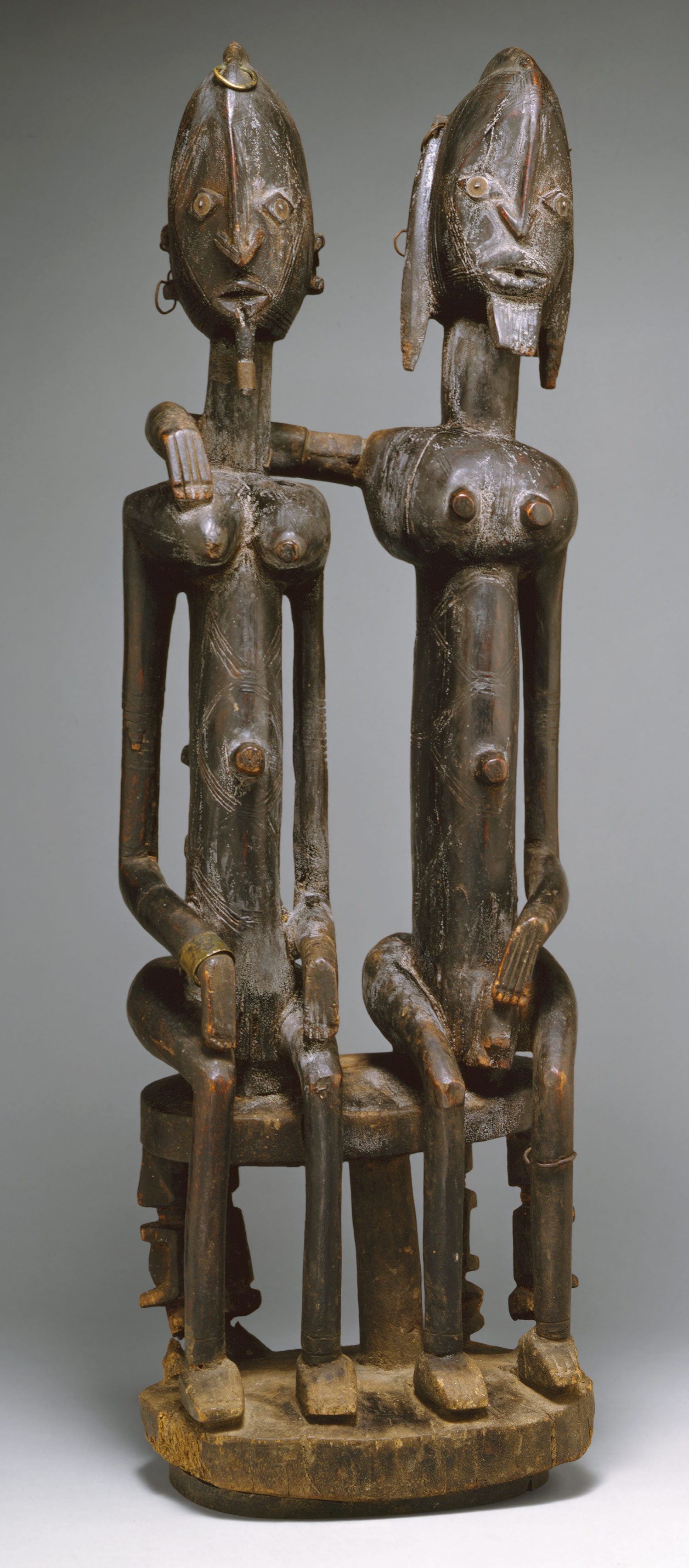The Dogon are well known for their figures. The Ancestor Couple would be an example of that. The Ancestor Couple shows two abstracted figures seated on a wooden stool. Each figure has elongated oval faces, almond shaped eyes, and a pointy arrow-looking nose. The way that you can tell which is male and which is female is by looking at the figures. The male has his arm over the females shoulder. The female figure has breasts that represent fertility. Each figure also has scarification on their bodies. The figures, while being abstract, are also geometric which is common with the Dogon.
The Baule peoples believe in having a spirit spouse (Blolo Bla) that they have to keep happy. They are told to spend at least one night a week with their spirit in order to keep the spirit spouse happy. The spirit spouse is often a tiny abstracted figure that resembles a human. The Baule people keep their spirit spouse hidden away from others and are often covered up. They believe that the spirit spouse is jealous of you and you are jealous of it.
When comparing these two objects I found that they are similar in that with the ancestor couple they represent a male and a female and without one you are said to be incomplete. The same goes for the spirit spouse, you need to spend time with it to keep it happy and without it you are incomplete. Their use of functions are different in that with the ancestor couple you do not have to spend time with it to keep the balance, but with the spirit spouse you spend time with it. Also the spirit spouse is kept hidden from others while the ancestor couple is displayed and not meant to be hidden. With the spirit spouse you also give offerings and it is more of a shrine than the ancestor couple. Stylistically the two can be similar in that the figures can be abstracted. The spirit spouse may be similar to the ancestor couple in that if the spirit spouse is female it may show the breasts that represent fertility and scarification.
Even though these two pieces come from two different cultures and peoples they share some similarities and differences. I look forward to the next couple of weeks as we continue to learn more about different peoples and their art.






